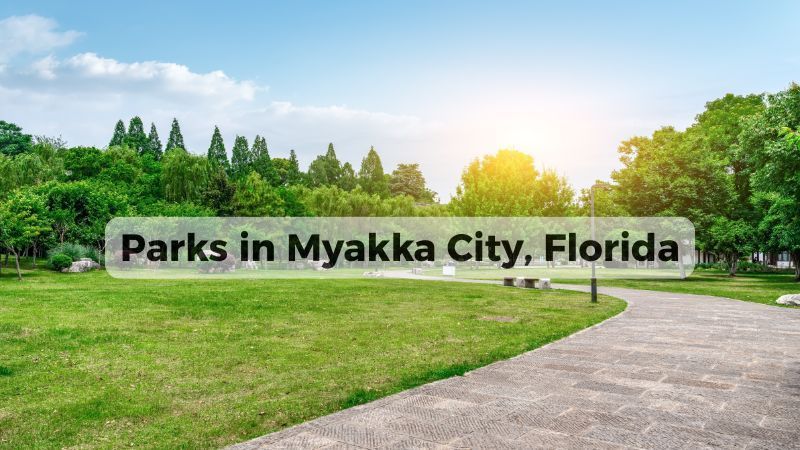Optimal Office Relocation Checklist

Moving an office is a significant undertaking that requires careful planning and execution. Whether you are a small business or a large corporation, relocating your office can be a daunting task that impacts all parts of your operations. However, with a well-structured office relocation checklist, you can streamline the process, minimize downtime, and maintain productivity throughout the move. Let's dive into the essential steps and best practices for a successful office relocation.
Initial Considerations Before Embarking on an Office Relocation Project
The first step in any successful office or commercial move is thorough planning. Begin by evaluating the reasons for the move. Are you looking for a larger space due to growth, or are you trying to reduce costs with a more efficient layout or location? Understanding the 'why' behind your move will guide the entire process and help clarify your goals.
Next, assess the scale of the move. This includes:
- The size of your current and new office spaces
- The distance between the old and new locations
- The complexity of your office setup, including specialized equipment or technology needs
Forming Your Office Relocation Committee
For larger offices, it's beneficial to form a relocation committee. This team should be composed of representatives from key departments such as IT, HR, and facilities management. Here’s how to set up your committee:
- Choose a project manager: This person will lead the relocation efforts and acts as the point of contact between the moving company, staff, and any external parties.
- Define roles and responsibilities: Each member of the committee should have a clear understanding of their tasks and deadlines.
Outlining the Financial Framework for Your Office Relocation
Creating a comprehensive budget is crucial for managing the costs associated with an office move. Start with a detailed estimate of all potential expenses to avoid unexpected financial surprises. Consider the following factors:
- Moving company fees: Depending on the size of the move and the distance, costs can vary significantly.
- Real estate costs: Include any fees associated with exiting your current lease and entering a new one.
- Infrastructure upgrades: New cabling, furniture, or specialized equipment installations can add to your expenses.
- Temporary storage: If there’s a gap between move-out and move-in dates, you might need storage for your equipment and furniture.
- Employee downtime: Account for the potential loss of productivity during the move.
Timeline and Scheduling
Crafting a Realistic and Efficient Moving Timeline
A well-planned timeline is essential to minimize the impact of the move on daily operations. Start by identifying key milestones, and then work backward to set deadlines for each task.
Consider the following milestones:
- Lease signing for the new location
- Completion of interior setup, such as installing IT infrastructure
- Actual move date
- First day of operations at the new location
Vendor Selection and Management
Selecting and Coordinating with External Partners and Vendors
Choosing the right partners and vendors is critical for a smooth transition. Your vendor selection should primarily focus on moving companies, but may also include real estate agents, IT consultants, and interior designers, depending on your needs.
Choosing the Right Moving Company:
- Research: Look for companies with experience in office relocations.
- Estimates: Obtain detailed quotes from at least three companies to compare prices and services.
- References: Check reviews and ask for references to assess their reliability and service quality.
- License and Insurance: Ensure the company is licensed and insured to protect your property during the move.
Working with Real Estate Agents, IT Specialists, and Interior Designers:
- Real Estate Agents: They can help negotiate lease terms that favor your business.
- IT Specialists: Necessary for planning and transferring your technical infrastructure without significant downtime.
- Interior Designers: Can optimize your new space for efficiency, comfort, and aesthetics.
Managing Vendor Relationships:
- Regular Meetings: Keep lines of communication open with regular updates and coordination meetings.
- Contracts and Agreements: Clearly outline services, responsibilities, timelines, and payment terms in all contracts.
- Feedback and Adaptation: Be responsive to issues as they arise and willing to adapt plans with your vendors.
Legal and Regulatory Considerations
Managing Legalities and Compliance During an Office Move
Navigating the legal and regulatory aspects of an office relocation is essential to avoid any legal troubles that could disrupt your business operations:
Understanding Lease Obligations and Conditions:
- Old Lease: Review the conditions for terminating your current lease. Look for any penalties for early termination or specific move-out conditions.
- New Lease: Analyze the new lease terms thoroughly. Pay particular attention to clauses concerning lease duration, rent increases, subleasing, and termination rights.
Navigating Zooterumped Laws, Building Codes, and Insurance Requirements:
- Zoning Laws: Ensure that your new location is zoned for your type of business. Non-compliance can lead to fines or forced relocation.
- Building Codes: Compliance with local building codes is crucial, particularly for modifications or new construction.
- Insurance: Review your business insurance to ensure it covers the move and update policies to reflect your new location’s specifics.
Employee Communication and Involvement
Keeping Teams Informed and Engaged
Effective communication is key to managing change and ensuring a smooth transition for everyone involved. Here’s how to keep your team informed and engaged throughout the office move:
- Early Communication: Inform your employees about the move as soon as possible. Early disclosure helps manage expectations and reduces uncertainty.
- Regular Updates: Provide regular updates throughout the residential moving process. Consider weekly email updates, dedicated intranet pages, or brief meetings to discuss progress and address any concerns.
- Involvement Opportunities: Encourage employees to participate in planning and decision-making where appropriate. This can include feedback on new office designs or input on logistical aspects of the move.
Addressing Employee Concerns and Feedback:
- Feedback Channels: Establish clear channels for employees to voice their concerns or suggestions. This could be through a designated email, feedback boxes, or scheduled Q&A sessions.
- Responsive Actions: Actively respond to feedback and adjust plans if feasible. Showing that you value and consider employee input can boost morale and cooperation.
Logistics and Infrastructure Setup
Ensuring Operational Continuity Through Strategic Planning
The actual logistics of moving an office require detailed planning to ensure that business operations can resume as quickly as possible in the new location:
- Organizing IT and Telecommunications Transfer:
- Pre-Move Preparations: Coordinate with IT specialists to prepare the new location’s infrastructure this includes internet and phone services, servers, and computer networks.
- Data Safety: Implement data backup solutions to prevent loss during the move. Consider cloud backups or offsite storage.
- Equipment Transport: Plan for professional handling and secure transportation of sensitive equipment.
- Furniture and Equipment Inventory Management:
- Inventory List: Create a detailed list of all furniture and equipment. This helps in deciding what to move, sell, or discard.
- Layout Planning: Design the layout of the new office in advance. This ensures a quick and organized setup of furniture and equipment.
Packaging and Labeling
Best Practices for Packing and Labeling Office Assets
Effective packing and labeling are pivotal for ensuring that all office items are securely transported and easily identifiable upon arrival at the new location. Here are some essential tips to follow:
- Packing Tips to Secure Sensitive Equipment and Documents:
- Specialized Containers: Use appropriate packaging materials for sensitive equipment like computers, servers, and other electronic devices. Anti-static packaging is recommended for electronic components.
- Professional Handling: Consider hiring professionals for packing high-value or fragile items to prevent damage during transit.
- Document Security: Securely pack important documents in locked, waterproof containers. Consider creating digital backups as an additional safety measure.
- Labeling Systems for Efficient Unpacking and Setup:
- Detailed Labels: Clearly label each box with its contents and destination room in the new office.
- Color Coding: Use a color-coded system to differentiate boxes by department or urgency of unpacking.
- Numbering System: Number the boxes and keep a corresponding inventory list. This helps in tracking all items during the move and ensures nothing is misplaced.
Day of the Move
Executing a Seamless Moving Day Operation
The moving day is crucial and requires exact coordination to ensure everything goes according to plan. Here’s how to manage the day effectively:
- Final Checklist for Moving Day:
- Last-Minute Inspection: Conduct a final walk-through of the old office to ensure nothing is left behind.
- Essential Toolkit: Prepare a moving day kit with tools, office supplies, and essentials that might be needed immediately at the new location.
- Emergency Contacts: Have a list of important contacts readily available, including moving company representatives, utility companies, and IT support.
- Coordination Tasks and Real-Time Problem-Solving Strategies:
- Point Persons: Assign point persons who are responsible for overseeing specific aspects of the move. This could include IT equipment setup, furniture arrangement, and utilities setup.
- Immediate Issue Resolution: Set up a command center at both the old and new locations to address any issues as they arise promptly.
Post-Move Adjustments and Review
Finalizing the Move and Ensuring Seamless Resumption of Work
Once the move is complete, there are still critical steps to follow to ensure everything is operating smoothly:
- Conducting a Post-Move Audit:
- Inventory Check: Cross-reference moved items with the inventory list to ensure everything has arrived and is in good condition.
- Functionality Tests: Test all equipment and systems to ensure they are fully operational.
- Gathering Feedback and Learning from the Relocation Experience:
- Employee Feedback: Solicit feedback from the team about the move and any issues they may be facing.
- Review Meeting: Hold a meeting to discuss what went well and what could be improved for future relocations.
Future Preparations and Considerations
Ensuring a Seamless Transition
In conclusion, successful office relocation involves meticulous planning, organized execution, and proactive management. From the initial considerations, budgeting, and scheduling to the final move day and post-move adjustments, every step of the process contributes to a smooth transition that minimizes downtime and disruption.
Master Movers, "Movers With Manners," located in Venice, FL, are experts in handling office relocations with professionalism and care. By partnering with a dedicated team that understands the intricacies of office moves, you can ensure that your relocation is handled efficiently and effectively.
Our Latest Blog





